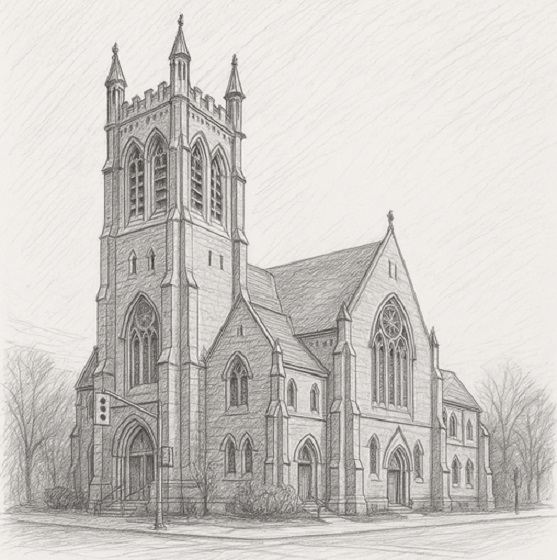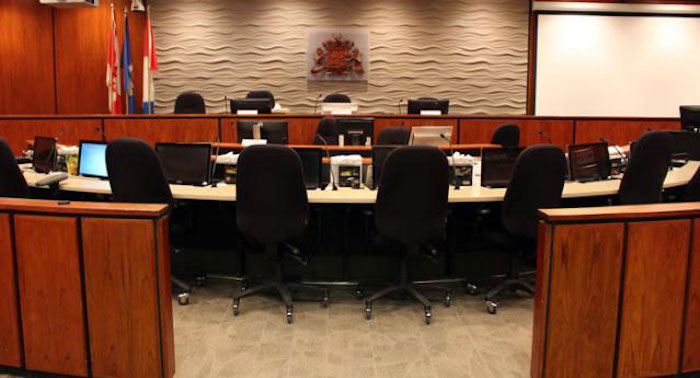Community
A hospital built to remember 3 young men lost to war

Here is another in a series of 3 stories that bring perspective to our local military history. Michael Dawe explains the history of the Red Deer Memorial Hospital.
The origins of the Red Deer Hospital go back to the beginning of the last century. Great Britain and her colonies became embroiled in the Boer War in South Africa. A number of young men from Red Deer and area went overseas to fight for the Empire.
On July 1, 1900, 22-year old Angus Jenkins of Red Deer was killed near Watervaal when his outfit was ambushed by a group of Boers. He was the first Red Deer resident and the first member of the Lord Strathcona Horse to be killed in action. Shortly thereafter, the community learned of the death of Archibald McNichol. In September, word came that Charles Cruickshanks had been killed near Bad Fontein.
On October 21, 1900, a large public service was held at the Methodist Church in memory of these three young men. At a subsequent public meeting, it was decided to build a hospital as a permanent memorial to them.
Early in 1901, an eight-member hospital board was formed with George W. Greene, a local lawyer, as the first chair. A public fundraising campaign was launched.
The board was given the money which had been collected at the memorial service for the Patriotic Fund. By January 1902, $1100 in pledges had been collected in the community. Lord Strathcona sent a cheque for another $1000.
The Victorian Order of Nurses promised $2000 and donated the plans and specifications for a 13-bed facility. Later, the hospital board passed a resolution officially affiliating the hospital with the V.O.N.
Initially, the board wanted to build the hospital on a site on the north side of the river, east of the Gaetz Avenue traffic bridge. However, Edward Michener and John T. Moore offered generous financial assistance towards the purchase of property on the top of the South Hill. In the spring of 1903, work began on this site.
The pace of construction was slow. Work on the superstructure did not get underway until August. There was a continual shortage of funds. Town Council was asked for an exemption from taxes and either a donation of money or a loan. In response, Council offered to pay off, with a donation of labour, any debt left after the completion of construction.
Finally, in April 1904, the building was ready for occupancy. A member of the V.O.N., Miss Wright, was hired as matron with a salary of $50 per month. The hospital board set the admission fees for patients at $7 for public wards and $10 for private rooms. Patients were expected to supply their own medicines and surgical dressings.
The first patient, W.N. Snider, was admitted to the hospital with a case of typhoid fever on the same day that the matron arrived for work. He unfortunately suffered a relapse and passed away on July 7th. On April 25th, Dr. Henrietta Denovan, assisted by her husband Dr. Howard Denovan, performed the first surgical operation. On May 3rd, the hospital board established a fee schedule for the use of the operating room.
The Women’s Hospital Aid Society gave the hospital a tremendous boost in raising funds to furnish the building. In October 1904, a young women’s organization, the Alexandra Club, was formed to also support the hospital. One of their more successful fundraising ideas was the creation of women’s hockey teams, the Stars and the Skookums.
The hospital board raised additional funds by selling “admittance tickets” at a rate of $5 per year for individuals and $10 annually for families. Local businesses were offered this form of hospital insurance for their employees at a cost of $1 per month per person.
Red Deer, although still a small town of only 1000 residents, now had the only hospital between Calgary and Edmonton.
Read about our region’s connection to the Lord Strathcona’s Horse.
Community
Support local healthcare while winning amazing prizes!

|
|
|
|
|
|
Community
SPARC Caring Adult Nominations now open!

Check out this powerful video, “Be a Mr. Jensen,” shared by Andy Jacks. It highlights the impact of seeing youth as solutions, not problems. Mr. Jensen’s patience and focus on strengths gave this child hope and success.
👉 Be a Mr. Jensen: https://buff.ly/8Z9dOxf
Do you know a Mr. Jensen? Nominate a caring adult in your child’s life who embodies the spirit of Mr. Jensen. Whether it’s a coach, teacher, mentor, or someone special, share how they contribute to youth development. 👉 Nominate Here: https://buff.ly/tJsuJej
Nominate someone who makes a positive impact in the live s of children and youth. Every child has a gift – let’s celebrate the caring adults who help them shine! SPARC Red Deer will recognize the first 50 nominees. 💖🎉 #CaringAdults #BeAMrJensen #SeePotentialNotProblems #SPARCRedDeer
s of children and youth. Every child has a gift – let’s celebrate the caring adults who help them shine! SPARC Red Deer will recognize the first 50 nominees. 💖🎉 #CaringAdults #BeAMrJensen #SeePotentialNotProblems #SPARCRedDeer
-

 Alberta2 days ago
Alberta2 days agoClick here to help choose Alberta’s new licence plate design
-

 National2 days ago
National2 days agoDemocracy Watch Renews Push for Independent Prosecutor in SNC-Lavalin Case
-

 Business2 days ago
Business2 days agoOver two thirds of Canadians say Ottawa should reduce size of federal bureaucracy
-

 Media2 days ago
Media2 days agoCanada’s top Parliamentary reporters easily manipulated by the PMO’s “anonymous sources”
-

 Agriculture2 days ago
Agriculture2 days agoIs the CFIA a Rogue Agency or Just Taking Orders from a Rogue Federal Government?
-

 espionage2 days ago
espionage2 days ago“Suitcase of Cash” and Secret Meeting Deepen Britain’s Beijing Espionage Crisis
-

 Frontier Centre for Public Policy1 day ago
Frontier Centre for Public Policy1 day agoOttawa Should Think Twice Before Taxing Churches
-

 Alberta1 day ago
Alberta1 day agoBusting five myths about the Alberta oil sands


















